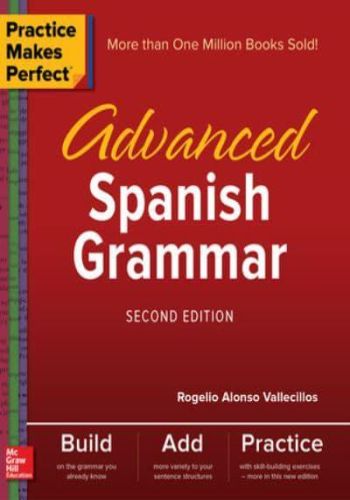Chapter 1: Present and Imperfect Tenses
* Reviews present tense and imperfect tense formations.
* Explains their use for describing actions, states of being, and habitual actions.
* Example: "El niño come helado" (present tense: the boy eats ice cream) vs. "El niño comía helado" (imperfect tense: the boy used to eat ice cream).
Chapter 2: Preterite and Imperfect Subjunctive Tenses
* Introduces preterite tense (past tense) and imperfect subjunctive tense.
* Discusses their uses for expressing actions completed in the past and for expressing unreal or hypothetical situations.
* Example: "Ayer fui al cine" (preterite tense: yesterday I went to the movies) vs. "Si fuera millonario, viajaría por el mundo" (imperfect subjunctive tense: if I were a millionaire, I would travel the world).
Chapter 3: Future Tenses
* Covers the simple future, future perfect, and near future tenses.
* Explains their use for expressing actions that will occur in the future.
* Example: "Mañana iré a la tienda" (simple future: tomorrow I will go to the store) vs. "Habré terminado el libro para el viernes" (future perfect: I will have finished the book by Friday).
Chapter 4: Conditional Tenses
* Introduces conditional sentences and explains the different types of conditional clauses.
* Discusses the use of conditional tenses to express possible or probable actions.
* Example: "Si llueve, no iremos a la playa" (conditional clause: if it rains, we will not go to the beach).
Chapter 5: Passive Voice
* Covers the formation and use of the passive voice.
* Explains the ways to transform active sentences into passive sentences.
* Example: "El libro está escrito por el autor" (passive voice: the book is written by the author) vs. "El autor escribe el libro" (active voice: the author writes the book).
Chapter 6: Relative Pronouns and Adverbs
* Introduces relative pronouns (que, quien, cual) and relative adverbs (donde, cuando, como).
* Explains their use for connecting clauses and defining or modifying nouns.
* Example: "El libro que estoy leyendo es muy interesante" (relative pronoun: the book that I am reading is very interesting).
Chapter 7: Direct and Indirect Objects
* Discusses the use of direct and indirect objects in Spanish.
* Explains the placement of pronouns and how to deal with ambiguous indirect objects.
* Example: "Le di el libro a mi hermana" (direct object: I gave the book to my sister) vs. "Le dije que vendría" (indirect object: I told him that I would come).
Chapter 8: Subjunctive Mood
* Covers the different types of subjunctive clauses and their uses.
* Includes exercises for using subjunctive in various contexts.
* Example: "Quiero que vengas mañana" (subjunctive clause: I want you to come tomorrow).
Chapter 9: Reflexive and Reciprocal Pronouns
* Introduces reflexive and reciprocal pronouns and their functions.
* Explains their use to indicate actions performed by or between the same subject.
* Example: "Me lavo las manos" (reflexive pronoun: I wash my hands) vs. "Nos abrazamos" (reciprocal pronoun: we hug each other).
Chapter 10: Pronouns and Agreement
* Reviews the different types of pronouns and their agreement with nouns and verbs.
* Discusses special cases of pronoun use, such as with indefinite pronouns and personal "a".
* Example: "Ellos están aquí" (subject pronoun: they are here) vs. "Les gusta la música" (object pronoun: they like music).







